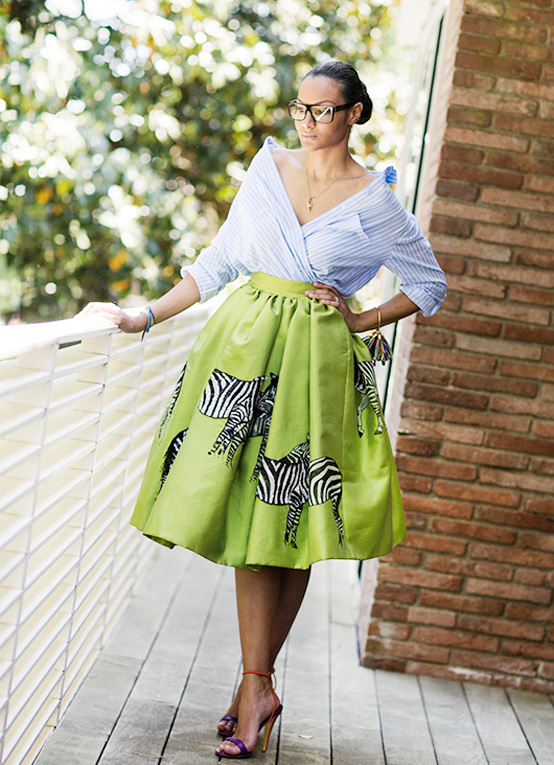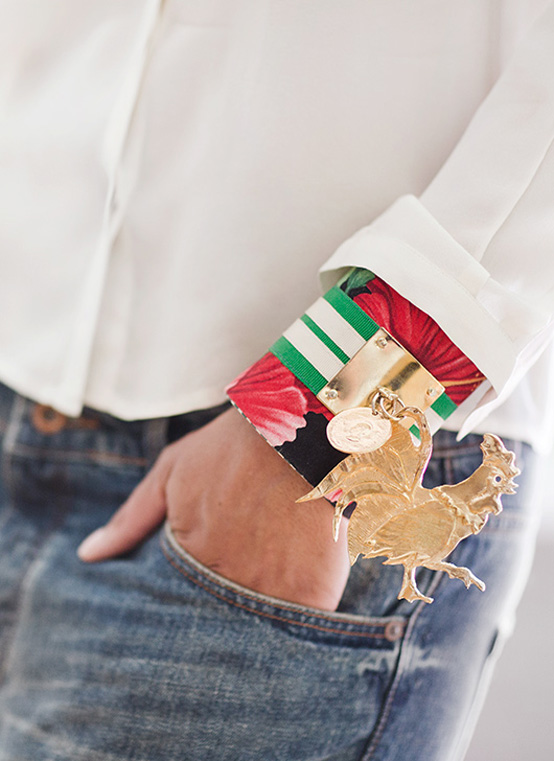 I can’t quite put my finger on why, but I’ve never had a burning desire to attend the shows in Milan. Not ever. Controversial perhaps, but it’s true. New York is, well, New York. Thanks to the big dogs like Ralph Lauren and Calvin Klein through to wunderkinds like Alexander Wang and Joseph Altuzarra, you haven’t experienced fashion week in all its glory until you’ve been to New York. London, quite rightfully, will always be known as the incubator of new talent, and, no matter how convincing the arguments in favour of live streaming are, nothing will ever compare to the feeling of waiting in the wings for the drama to unfold at a Chanel or McQueen show in Paris.
I can’t quite put my finger on why, but I’ve never had a burning desire to attend the shows in Milan. Not ever. Controversial perhaps, but it’s true. New York is, well, New York. Thanks to the big dogs like Ralph Lauren and Calvin Klein through to wunderkinds like Alexander Wang and Joseph Altuzarra, you haven’t experienced fashion week in all its glory until you’ve been to New York. London, quite rightfully, will always be known as the incubator of new talent, and, no matter how convincing the arguments in favour of live streaming are, nothing will ever compare to the feeling of waiting in the wings for the drama to unfold at a Chanel or McQueen show in Paris.
You might be wondering how I ended up in Milan for fashion week back in September then? The answer is pretty simple: Stella Jean. I pretty much flew there with the sole purpose of seeing her new collection and to catch up with her after the shows. It’s worth admitting here, though, that I’m a self-confessed minimalist – in my world, wearing navy equates to embracing colour. But ever since she arrived on the scene back in 2011, there was something about her designs – what with their kaleidoscopic clashing prints and exaggerated silhouettes, either unashamedly ladylike or tomboyish and masculine – that instantly resonated with me. But more than that, it’s after reading countless interviews with her over the years that made me interested in the woman behind the clothes.
“My interest in fashion comes from the necessity of finding my own expressive language,” she tells me. “Fashion is my most authentic communication medium to express and resolve the sense of inadequacy that has guided me through the first years of my life.” To give you a bit of background, Jean was raised in Rome to a Haitian mother and Italian father. She admits it was hard growing up in a ‘black and white family’. No one believed she was Italian, but she didn’t feel Haitian either. Exploring and championing her Italo-Haitian origins has emerged as the common thread in everything she creates.
Her method is now familiar: Western shapes and silhouettes perfectly fused with colours, patterns and prints inspired by Haiti and various parts of Africa. It’s clear that everything she creates is deeply personal. There’s no doubt that Stella Jean the brand is very much a reflection of Stella Jean, the person. Often spotted wearing a printed throw over, slacks and loafers or a pinstripe shirt and doll-like high waisted balloon skirt, she’s the walking embodiment of the eccentric mix-and-match approach her customers are buying into in their drives.
“The beginning of my career as a designer coincided with a lot of work I was doing on myself as a person. It was a time where I decided to undress myself of every superstructure and tell who I really am.” This happened, she tells me, around the time she had been rejected twice by Who Is Next, the fashion talent competition set up in 2005 by Italian Vogue and Alta Roma to support new talent in Italy. It’s after not making the cut the second time round that she had a eureka moment. “It showed me that I was doing something totally wrong. It inspired me to make something more real and unique,” she says frankly. “What’s unique about me is my personal story and my roots. That was the final click. I mixed a shirt from my father to symbolize my European roots with wax fabrics to represent the African roots of Haiti to embrace the native island of my mother.” The rest, as they say, is history.
 After going on to win the competition, Armani chose to support her third collection by lending her his 550-seat show space and his PR team – the first time he had ever shared both with any other designer. They had never met but the move proved a cornerstone moment in her career. “[Armani] said to me, ‘Never loose your DNA because it’s the most powerful thing, and you are recognisable – this is more than a signature,’” she recounted to a crowd in conversation with Ariele Elia and Elizabeth Way at the Fashion Institute of Technology. Unsurprisingly, buyers quickly took note – Matches Fashion included – and the orders doubled after the first collection, tripled after the second and her signature volumous skirts and statement dresses continue to sell out.
After going on to win the competition, Armani chose to support her third collection by lending her his 550-seat show space and his PR team – the first time he had ever shared both with any other designer. They had never met but the move proved a cornerstone moment in her career. “[Armani] said to me, ‘Never loose your DNA because it’s the most powerful thing, and you are recognisable – this is more than a signature,’” she recounted to a crowd in conversation with Ariele Elia and Elizabeth Way at the Fashion Institute of Technology. Unsurprisingly, buyers quickly took note – Matches Fashion included – and the orders doubled after the first collection, tripled after the second and her signature volumous skirts and statement dresses continue to sell out.
Her story isn’t the usual, ‘goes to top fashion school, works at top labels before going out alone’ narrative. She has no formal training. She actually studied a political science degree at La Sapienza University in Rome but didn’t finish because her interest was drawn to fashion during her time modelling for Egon von Fürstenberg, the Swiss-born aristocratic fashion designer and ex-husband of Diane von Furstenberg. He was a friend of her mother and introduced her to other-well known Italian designers at the time like Valextra and Gattinoni. While she was interested in fashion, being part of the industry as a model felt wrong.
“I quickly realised that my real vocation was being a creative, a designer,” she enthuses. “I don’t regret the past. Working as a model helped to me make me what I am today. It was very useful working from a model’s point of view,” she continues. “It allowed me to understand the enormous potential of fashion as a social barometer and medium of communication. I was in the right place, but in the wrong guise.”
For Jean, her collections go beyond ‘fashion’. Social commentary and culture lead her design process. She doesn’t believe the world needs more ‘designers’ pandering to trends and the flightiness of fashion doesn’t faze her. “My aim has never changed,” she says, matter-of-fact. “Fashion can be used as a cultural translator. We can re-establish our relationships with symbols, stories and different worlds through style. If we can mix elements from distant cultures into an outfit that’s aesthetically pleasing, we can definitely embrace this juxtaposition of cultures in real life.”


